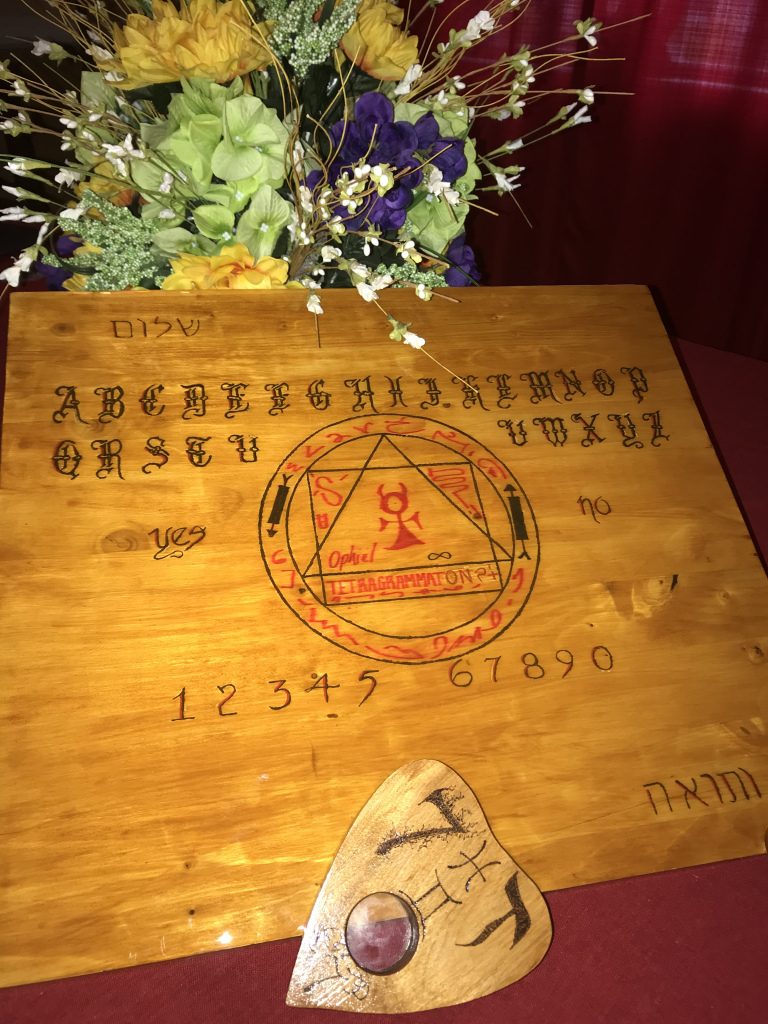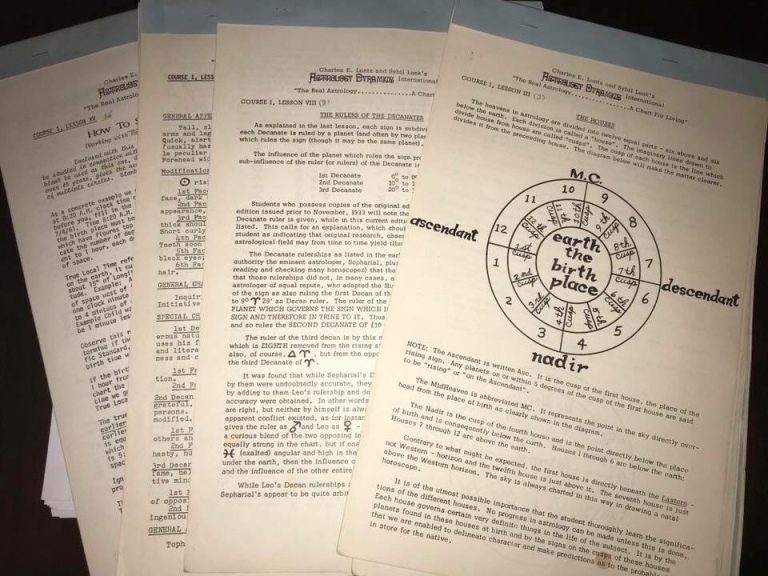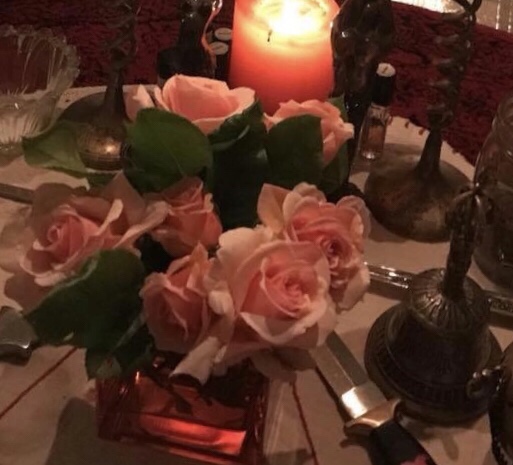According to many widely available sources, the word Esbat meant “to dance or frolic”. This, of course, still happens at some Esbat rituals to this day.
But what is an Esbat in witchcraft today centred or based on? There seems to be some confusion of the frequency of Esbats, and also what an esbat means in Wicca today. For some witches, it is any ritual or meeting at coven that aligns with the moon phase or a particular lunar phase. For some covens it just means ’the full moon ritual’. (Some older covens, like ours, did not have specific lore surrounding the word ‘Esbat’ in our earliest coven materials. Instead, the oldest material just said things like ‘Full Moon Ritual’ and ‘Ceremonial at the Full Moon’. This was because originally, the coven met for the Four Seasonal Rituals of the year and New and Full Moons were mainly for casting of private spells. As of the late 1960s, we now have a full round of 13 New Moon Esbats and 13 Full Moon Esbats that can be performed in a full coven.)
Regardless of tradition and differences of practice and frequency, I think most of us can agree that when it comes to coven work, that an Esbat could be generally described as ‘any standard meeting of the coven that consists of just the private, initiated members of the coven’.
The witches present for an Esbat, at least in my own tradition, must be deemed sufficient enough in knowledge, psychic skills and magical ability, and be able to perform well with group coven magics before being permitted to work in full coven Esbats. They must prove their magical and psychic ability before the coven and be determined to have reached that type of proficiency and understanding. Initiations of this sort are not given, but they must be earned by their magical and psychic abilities, and not just because they are suitable or well-liked.
While the Seasonal celebrations are much more communal, the Esbats are a bit more intimate as they express the inner-workings that are sometimes very complex undertakings, and that is why the need for differentiation in the levels of proficiency.
A period of time is built in for a newly initiated witch to hone their skills at spell-making, sorcery and talismanic magics before they are permitted to attend the important Esbats. In our own Wolfa Coven, that is what marks the difference between a First Degree Craftsman and a First Degree Covener. The Craftsman is a valid witch, but not yet fully developed to the point where they can work harmoniously in all aspects of sorcery and talismanic magics, whereas a First Degree Covener has the needed skills and knowledge to be able to attend and participate in Sabbats and Esbats. This transition is recognized as well in formal ceremony.
This article is not written just to outline what might be possible when you initiate into a coven but can also provide you with some options if you already have your own coven.
The prime importance of an Esbat, as our group has come to know it, concerns itself with the workings of sorcery and talismanic magic, as opposed to the Seasonal festivals which are more focused on a celebration of the Seasonal progressions and alignment with that particular time of year. During the Seasonals, our incantations might still petition the Deity or Universal Life Force for what is needed in our lives and we might focus on those in need through group thought-transference, long-distance hypnotism, telepathy and manipulation of the elementals within the Astral Light, but at those times we also focus on prayers of gratitude and Thanksgiving for what we have received as well as requesting wisdom from the Great Mother Goddess. This is different than the Esbats where very specific spell-making or sorcerous acts are performed and done in a very specialized manner. (Also, typically the Seasonals or Sabbats occur only four times a year, or more commonly today, eight times per year – whereas Esbats generally occur more frequently if at all possible.)
So what is the frequency in which the witches might meet at coven for Esbat Rituals? There is no set-in-stone answer to this question, as witchcraft practices are pretty far and wide in scope and a number of important factors such as mundane responsibilities and even travel restriction may play a vital role in this. So probably the best answer would be that the coven would probably meet as frequently as they wished and were able to do so!
Here is a potential list of common types of frequencies found across various branches of witchcraft practice that a coven might choose from if they don’t have a specific set tradition for this:
- Full Moon Ritual– many older covens may be familiar with only one type of Esbat Ritual, which meant that witches met at coven for the full moon. In most cases, that meant that when it came to Esbats, there was only one ritual you might have in your coven workbook for this. Magic might be performed as needed at this time.
Many books on Wicca discuss a practice that has become known as ‘Drawing Down the Moon‘ that might even be a common practice at this time as a coven’s particular Goddess indwells within the Priestess through an act of Evocation in order to speak prophesy or grant blessings to her followers. This format and frequency could potentially allow for up to 13 Esbat Ritual occasions per year.
- New Moon Ritual– Some witches may decide to also meet at the time of the New Moon for a New Moon Esbat. When this is the case, some witches and covens may decide they would divide what type of magic is appropriate for New Moon rituals and what type of magic would be appropriate for Full Moon Rituals.
- Full & New Moon Rituals – Typically, if New Moons were instituted as a meeting time, then it seems that most covens who perform New Moon Rituals, perform Full Moon Rituals as well. It is important to realize that some covens may only perform Full Moon Rituals when it comes to Esbats and other frequencies of meeting might not be found within the coven’s core teachings. In the instance of a coven that works at both New Moon and Full Moon, some covens might say that during the New Moon Rituals they might work magic to draw in new things and to nurture initiatives, whereas at the Full Moon Rituals they might work on banishment, release and psychic pursuits. This is more so in line with classical Occultism.
- Weekly Esbat – Some covens might decide to meet once each week for an Esbat. When this is the case, it is typically on a Friday night into Saturday (night of Venus) or a Wednesday night (the night of Mercury) to perform magic together. The coven might have a feast before or after the ritual is conducted and meeting would not depend on when it was Full or New Moon. Covens might pay attention to a wide scale of various Moon phases and will work magic depending on which phase the moon is in.
- Closest Saturday to Full and/or New Moon – Because occasionally some groups of witches live further away from the place of meeting (covenstead), some groups may choose to meet at the closest Saturday or another set regimented time. Typically, Esbats are not compulsory Rites of witchcraft like the four Seasonals are, so most groups would be okay if you can’t make every single Esbat Ritual. In this case, as long as the Esbat occurs within a specified period of days, it is still considered okay and in line with the energy.
- Astrologically Timed Esbats – Some covens may time their Esbat rituals by astrological timing as well as the moon phases. This is two-fold: First, depending on what sign the moon is in at the time set for meeting, such as if the Moon is waxing in Aries or Libra or any other of the 12 astrological signs. They might say that a particular moon in sign may have a different effect on the outcome of the spells themselves, or even slightly different rituals for a Cancer Moon or a Virgo Moon. The sign the moon is in adds a particular “flavouring” to the energy flow that is present at this time. Some covens may not necessarily plan that far ahead and decide on the proper wording of the invocations and incantations that will be in line with one of the particular 12 signs the moon is in for that ritual. Some covens may not perform a different ritual at this time, but the meditation part of the Esbat may slightly change depending on the sign the moon is in.
The second method is by using the planetary/angelic days and hours which is a system where each hour of daylight and night is ruled by one of the seven classical planets or one of the seven archangels and aligning this with the correct day of the week. For planetary and angelic hours, this is where the hours of daylight and the hours of night are converted into minutes and then into hourly divisions. This means that at certain times of the year, the hours of the day may be longer or shorter than 60 minutes and vice-versa depending on the time of the year it is scheduled. In this system, the only time the hours will line up with perfect even minutes is during the Equinoxes. This method is for serious coven work. Most of the time, the planetary/angelic hours will be used when performing solitary spell-making. It is quite simple, but effective. Figuring out the hours and observing the sign the moon is in seems to add to the spell and goes with the old maxim of, “you get out of it what you put in it.” A greater emphasis might be placed on this when performing talismanic magics, which some groups may even use a technique they call ‘binding the sigils of the art’ or the crafting of Charms.
Others may also run a general chart on the day as well to find the specific transits affecting the planets and signs for the day. For important workings, we do this as well.
Transits of course include the trines, squares, oppositions, conjunctions and parallels. These careful calculations will allow us to be informed of what beneficial or malefic effects will be placed on that sign and the houses they will affect and their favourable influences.
- Full Moon Rituals based on the Lunar Folk Names – As we know, there will be 13 full moons in the course of one calendar year. One month will typically have two full moons since the lunar calendar and the Roman calendar don’t quite line up. Some groups, lines or traditions might even create separate rituals based around these colloquial folk names that might be different from location to location. One example of this may be a list of 13 Esbats such as: Wolf Moon, Storm Moon, Sap Moon, Seed Moon, Hare Moon, Flower Moon, Rose Moon, Wort Moon, Barley Moon, Harvest Moon, Blood Moon, Snow Moon & Oak Moon.
The use of these folks’ names for Full Moons seem to be very popular in the US. My guess for keeping their popularity thriving is the US, even as far back as the famed Philadelphian Benjamin Franklin, included them in his yearly almanac he called “Poor Richard’s Almanack.” Of course today, almanacs of all sorts are just as popular as they were in Ben Franklin’s time and they taught us many, many things; and it seemed each almanac had different folk names for each of the Full Moons per year.
Growing up with access to our own farm, I was familiar with some of these names which aided and gave signs in rural farming life. When it came to growing corn, if the corn wasn’t at least “Knee high by the Fourth of July” we knew the crop was running late. We also knew that certain things could only be planted when the Dogwood Trees started blooming, or when the “Judas Bushes” (also known as “Red Bud Trees”) started blooming.
One popular bit of farming and astrological wisdom that all the many almanacs did is keep alive and well the practice of farming and even simple gardening aligned with the astrological signs. For example, if the Moon was Waxing in a Water sign such as Pisces, Scorpio or Cancer, that was considered the best time to plant above ground crops. You would NEVER plant them when the moon was Waxing in a Fire Sign such as Leo, Aries or Sagittarius – that time was more conducive to pulling weeds! Obversely, if the Moon was Waning in a Water or Earth Sign, it may be a good time to plant below ground crops like potatoes, carrots, beets, etc. This type of farming is still done to this very day! Being involved in witchcraft since I was a child made me pay attention to these little country life ways growing up and impressed on my memory certain facts of life that my counterparts who live in big cities don’t know. Even now in my life, I still won’t live in a big city – I still want quick and easy access to escape to a simple country setting any time I want.
With regard to the Esbat Rituals; of course, as you can guess, each group may have a different set of practices they follow when it comes to when and how they perform Esbat Rituals – even within the same line or tradition! Some groups of witches may even try different things on different years as the coven interest dictates. Even eclectic groups might develop their own system and style. Some groups may even schedule times for Esbats and perform these as a solitary but will do so at the same time using astrological timing, all bringing their will to bear on a situation at the same time remotely.
One important thing to mention that I have personally found: It is NOT the quantity of witches working the same spell together at the same time that dictates great success. A mass number of witches working on an issue does not necessarily equal success in any way, and in fact, large groups of witches working together seems to cancel things out rather than produce something fruitful. Instead, it is the quality of work, skill and training that dictates success. A small group of three serious occultists can out-Power a large mass of 50 occultists doing sloppy occult work. The emphasis should be on quality, rather than quantity. With so many large groupings of people divided over the things that don’t seem to matter much, this is a word of caution for those that don’t have like-minded focus.
When it comes to witchcraft, it is rarely politics and personal opinions that matter – actual results are the only measure of success. Everyone can have their own outlook on many issues, but if these things get in the way and become more important than quality work, rarely will a large dysfunctional grouping be able to muster the necessary collective power needed for results. This is probably one of the real reasons for the last part of the Four-Sided ‘Pyramid of the Sphinx’ found in classical occultism which tells us ‘To Be Silent’. This means group acts of spell-making should be performed by a chosen selection of witches that you can get in-synch with, hence, why spell-making tends to always be a ‘small group activity’ amongst those that can get-on with each other.
Have you ever noticed how posts on private Facebook groups asking for healing work to be done seem to go nowhere but flop?
The above listing of seven options you may find might be far from a complete list and some may have developed cycles that are very different than any that I have come to describe.
Maybe your grouping of witches doesn’t meet at coven during chosen Esbats at all? That is fine too but doesn’t mean that you can’t use the opportunity of the Esbats to perform your own private sorcery. Even when you are an initiate who is part of a group of witches, much of your practice will still be solitary. A group of witches can bolster each other, but that can’t become a distraction from the needed solitary work that we still must do.
A common complaint I have heard amongst some of the High Priesthood over the years is, “I feel I am too busy tending the needs of my own coven and never have time for my own needs.” If you find yourself saying this, remind yourself of one of Sybil Leek’s first Tenets of Witchcraft which is the Tenet of a Balanced Life. Regardless of how much we try, the High Priesthood will still sacrifice a lot for the greater good of a group, but it is important to always stay grounded in the firm reality that you can only help your group if you continue your path of progressive evolution and learning too… which brings us to another of the tenets, which is the Tenet of Learning.
Those who have been in witchcraft for a long time and who have found their place in this world may perform spells less often than those who first come into it. That doesn’t mean that you stop all your solitary work that you also do, but means more time is spent in meditation and contemplation – allowing the Deity and the guides to guide you, and when needed, to bring you the information. This still occurs no matter what successes you have achieved, and no matter what trials or travails you may experience… never forget to stop and listen… and be.
Blessed Be,
Thorn Nightwind, Wolfa Coven, Horsa Tradition & Sacred Pentagraph
References:
Images: Thorn Nightwind
The Sacred Pentagraph: Books I, II, and III Paperback – December 30, 2015, by Tarostar (Author) Paperback: 304 pages, Publisher: Left Hand Press, ISBN 978-0692600528





